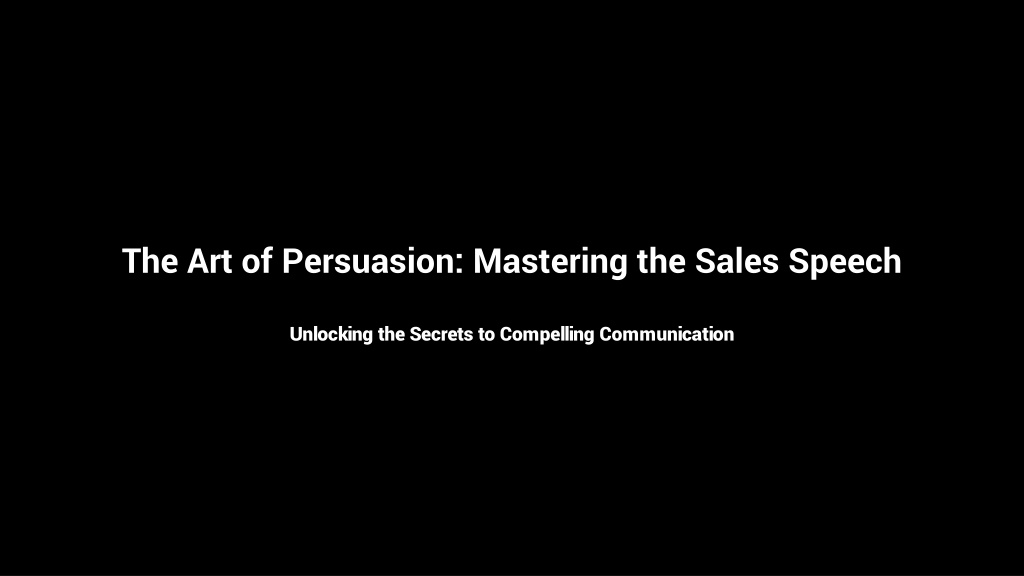
Mastering the Sales Speech: Secrets of Persuasion
Unlock the secrets of compelling communication with this guide on mastering the art of persuasion in sales speeches. Learn the difference between informative and persuasive presentations, Monroe's Motivated Sequence, and the essential steps - Attention, Need, Satisfaction - to captivate and convince your audience effectively.
Uploaded on | 0 Views
Download Presentation

Please find below an Image/Link to download the presentation.
The content on the website is provided AS IS for your information and personal use only. It may not be sold, licensed, or shared on other websites without obtaining consent from the author. Download presentation by click this link. If you encounter any issues during the download, it is possible that the publisher has removed the file from their server.
E N D
Presentation Transcript
The Art of Persuasion: Mastering the Sales Speech Unlocking the Secrets to Compelling Communication
Introduction: The Power of Persuasion Persuasion is an essential skill in life Understanding the difference between informative and persuasive presentations Defining persuasion and its impact on attitudes, attitudes, beliefs, values, and behaviors Highlighting the importance of motivation in sales in sales speeches
Informative vs Persuasive Presentations Informative presentations provide neutral information Persuasive presentations urge the audience to to make choices and take action Differences in audience commitment and focus focus Impact of emotions in persuasive speeches Photo by Pexels Photo by Pexels
Monroe's Motivated Sequence Alan Monroe's organizational structure for persuasive presentations A needs-based approach to motivate the audience The five steps: Attention, Need, Satisfaction, Visualization, and Action (ANSVA) Comparison to problem-cause-solution organization Photo by Pexels Photo by Pexels
Step 1: Attention Capturing the audience's attention Creating relevance to the subject matter Importance of engaging openings Building a connection with the audience Photo by Pexels Photo by Pexels
Step 2: Need Developing a sense of need in the audience Identifying existing problems or gaps Addressing physical, psychological, and social needs Effectively communicating the urgency of the need Photo by Pexels Photo by Pexels
Step 3: Satisfaction Offering a solution to fulfill the identified need Addressing the concerns raised in the needs step Highlighting the benefits and advantages Providing explicit information on how to obtain the solution Photo by Pexels Photo by Pexels
Step 4: Visualization Positive visualization: Paint a picture of a desirable future with the solution Negative visualization: Highlight the potential consequences of not adopting the solution Enhancing emotional impact through visualization Balancing positive and negative techniques Photo by Pexels Photo by Pexels
Step 5: Action Providing necessary information for immediate action Explicitly instructing the audience on what to do Addressing potential concerns or questions Concluding the speech with confidence Photo by Pexels Photo by Pexels
Key Ideas for Success in Sales Speeches Understanding the audience's needs and pain points Selecting appropriate items to sell based on customer problems Emphasizing the importance of the item to satisfy the audience's needs Preempting potential concerns and objections Delivering the presentation with authenticity and creativity Asking for the sale and providing necessary information Photo by Pexels Photo by Pexels
